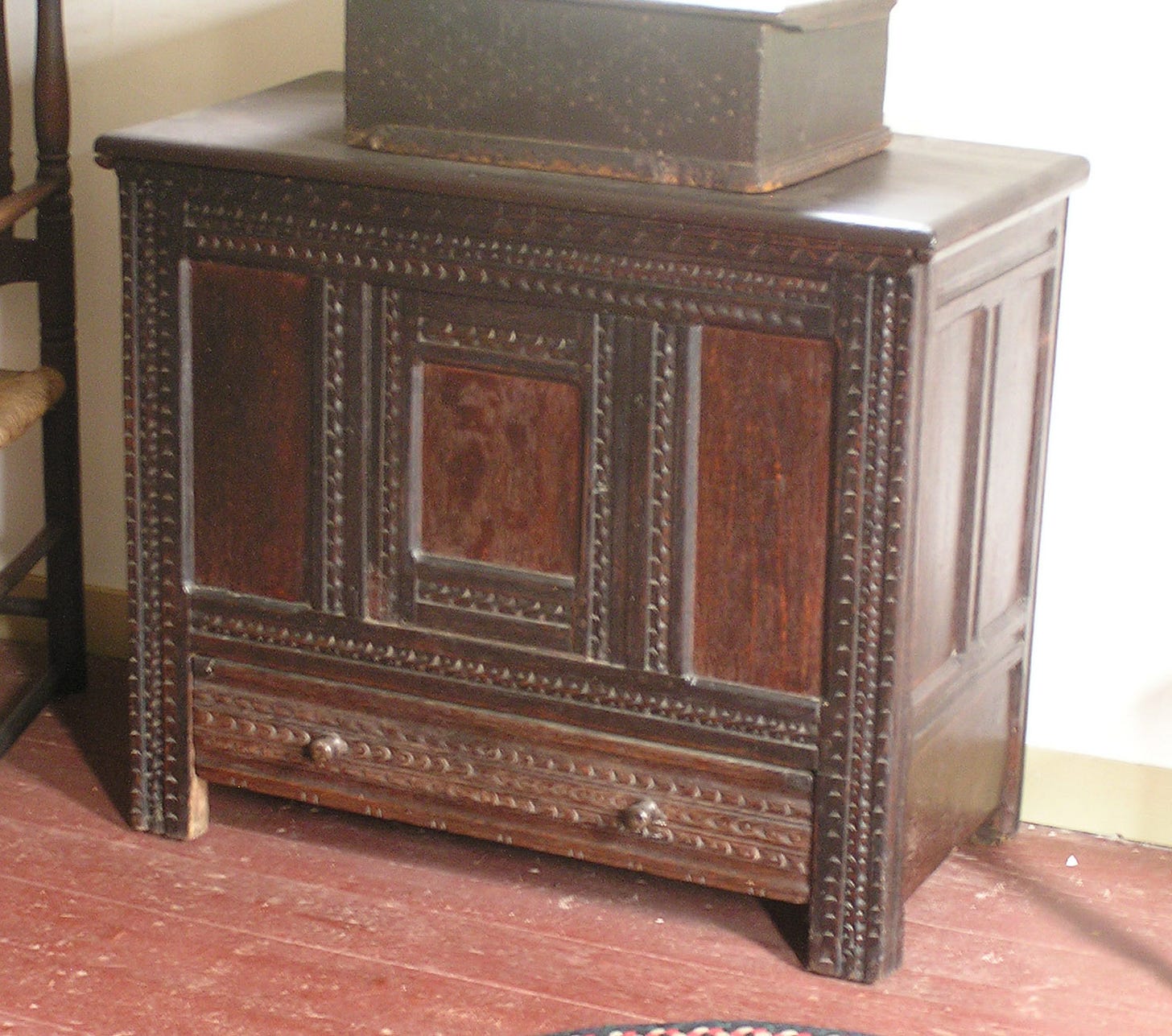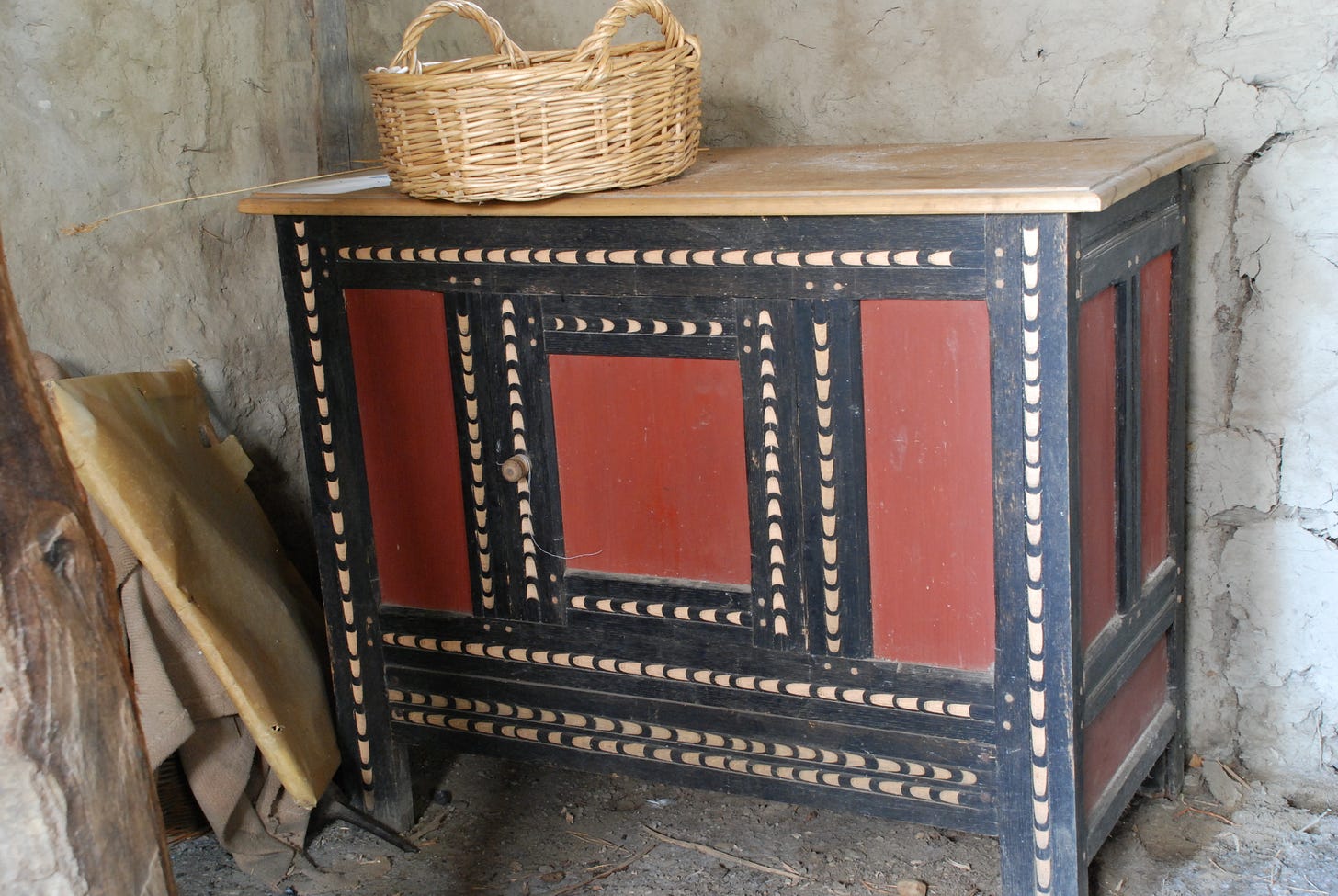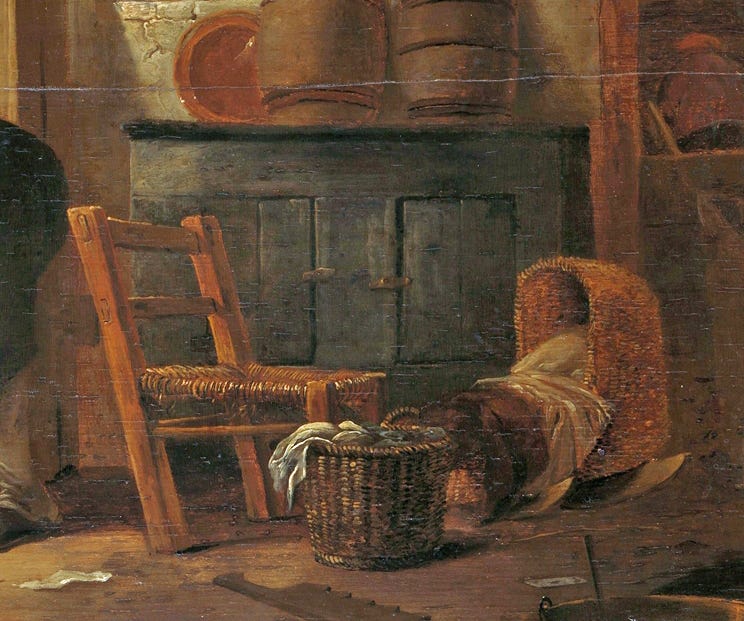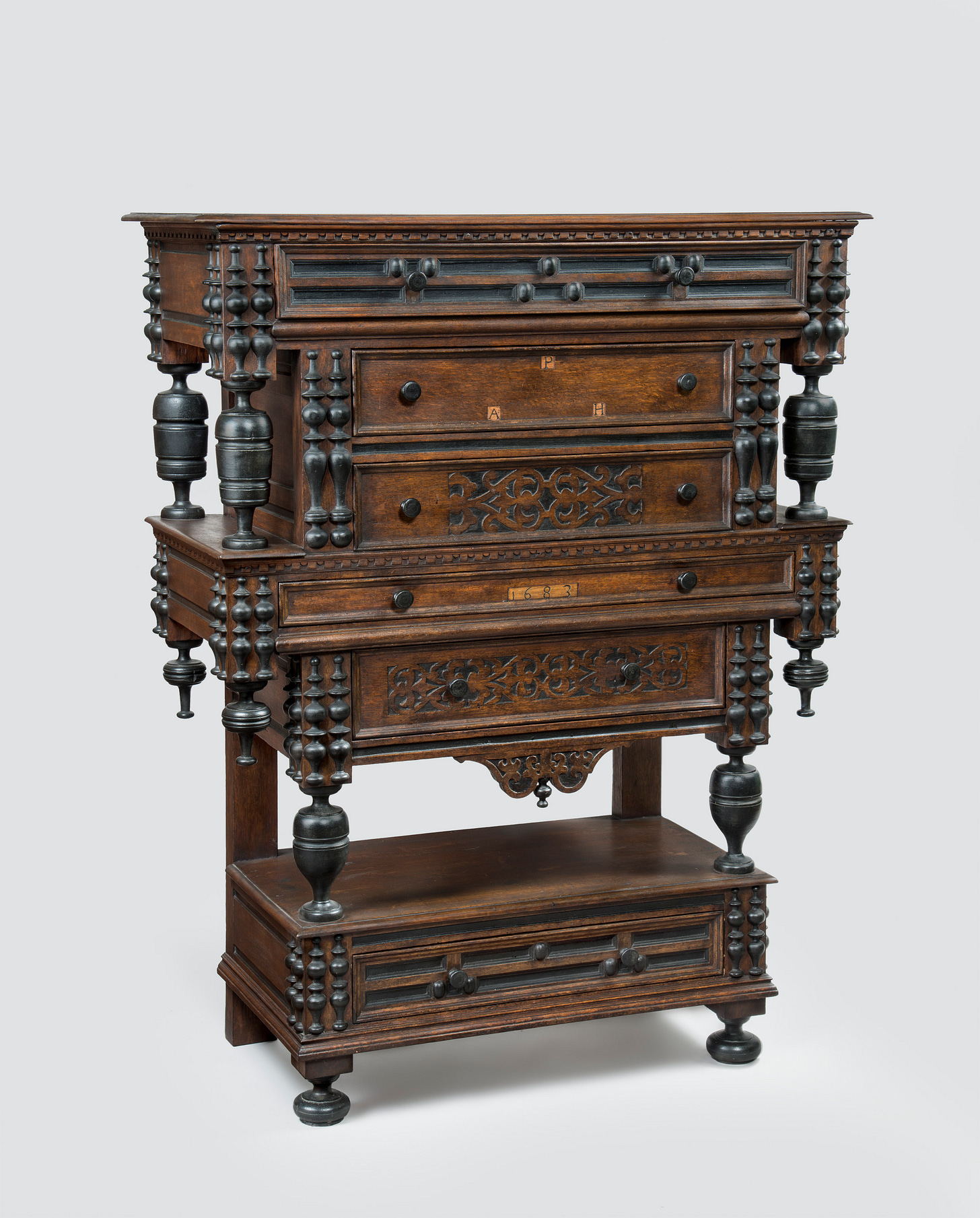I’ve been fixated on the full-blown cupboards I’m currently copying, but period households often had pretty simple cupboards. They’re just not often found surviving in collections. This one is from the Jones River Village Historical Society, right down the street from there. It' was probably made locally, Kingston or Plymouth, sometime before 1700 - oak & pine. Maybe colored originally, but hard to tell now. A single drawer below. Gouge-cut decoration, applied molding across the top rail, chamfers and stops on the side framing. I don’t know if there used to be a bottom rail on the side - I hope so. But all in all, nicely done work.
Now for the stupid part - it started life as a cupboard, with a central door to access its contents. Some chucklehead fixed the door shut and put a hinged lid on it. Turning a rare survivor into a common item - a joined chest. Not a good chest either. If that’s not bad enough, the same thing happened to the only other free-standing simple cupboard from 17th century New England - this one found in Topsfield Massachusetts early in the 20th century. No drawer this time - new iron hinges. Nice scratched moldings around the panels in front. I’ve never seen this one - I took the photo from New England Begins - (a 3-volume exhibition catalog from Museum of Fine Arts Boston 1982)
Here’s one I made around 2006 or 2007 when I worked at the local living history museum. The paint scheme is total conjecture - not sure what it looks like today, now that it’s been broken-in. Painted first, gouge-cut carvings into the painted surface.
When I made that I was loosely basing it on the Jones River Village cupboard but over the years I studied Dutch paintings of the period as well, looking for furniture forms that aren’t represented in collections. Here’s a painting by Cornelius Decker, a Weaver’s Workshop -
and a detail of that cupboard (the chair we’ll save for another discussion) -
I never saw it in color til today! But below is an oak & pine cupboard I made in the 1990s - with simple board doors nailed to cleats inside - hinged with iron hinges by Mark Atchison. He still makes some stuff for me now, just long-distance these days.
It’s a pine carcass with an oak joined front. All nailed other than the 6 mortise & tenon joints in the front. Shelf at the bottom, probably one half-way up too - I forget.
Another avenue to explore furniture in is probate inventories. I collected lots of them over the years. In 1646 John Fairfield of Wenham (Massachusetts) had “one cubbort” worth 5 shillings 6 pence. Not a terribly high value, no description of the cupboard beyond that. 1651 Henry Birdsall of Salem had “2 Cubboards” worth 15 shillings. George Williams of Salem - a “Court Cubberd 16s.” This usually refers to something like what I’m making - a two-tier piece enclosed above, maybe open shelves below, maybe enclosed.
Other terms I found included “standing cubbert”- as opposed to a “hanging cubberd” and “livery cubbert” - usually for food.
And indication that we’re getting into more elaborate furniture forms is when you see a “Cushion for a Cubbard’s head” valued at 1 shilling. This is just what it sounds like, a cushion placed on top of a cupboard to then display “plate” - silver, pewter, maybe ceramics. Sometimes “cubbard cloths” instead. Sometimes both. In 1667 Samuel Archer of Salem had a “side Cubboard a cloath & Cushin” valued at £1-10. In Ipswich George Giddings had a “cubburd with drawers” worth £2-10. That’s in the other end of furniture forms - pricey stuff.
This one below relates to the one I’m making - and I’ve often wondered what to call it - it’s not technically a cupboard - it’s all drawers. Maybe the next customer to fall out of the sky into my shop will need one of these. Jennie Alexander used to call this sort of piece a “lunar lander.” Close enough.











do you think the cradle in the Dutch painting is meant to be occupied? It looks woven like a basket. Know anything about that form?
"lunar landing" -- JA seems to have had a gift for finding just the right "tag" for different forms